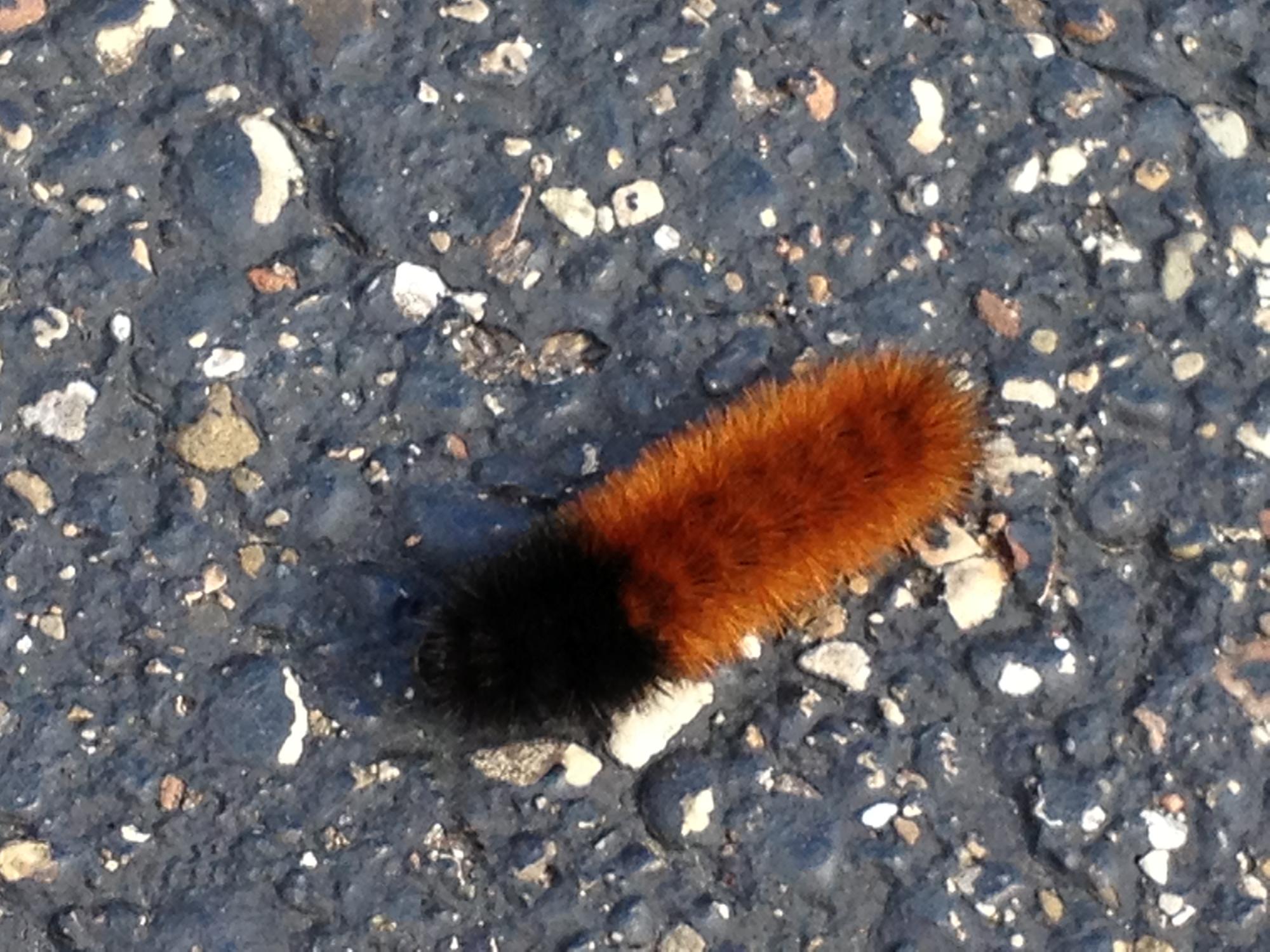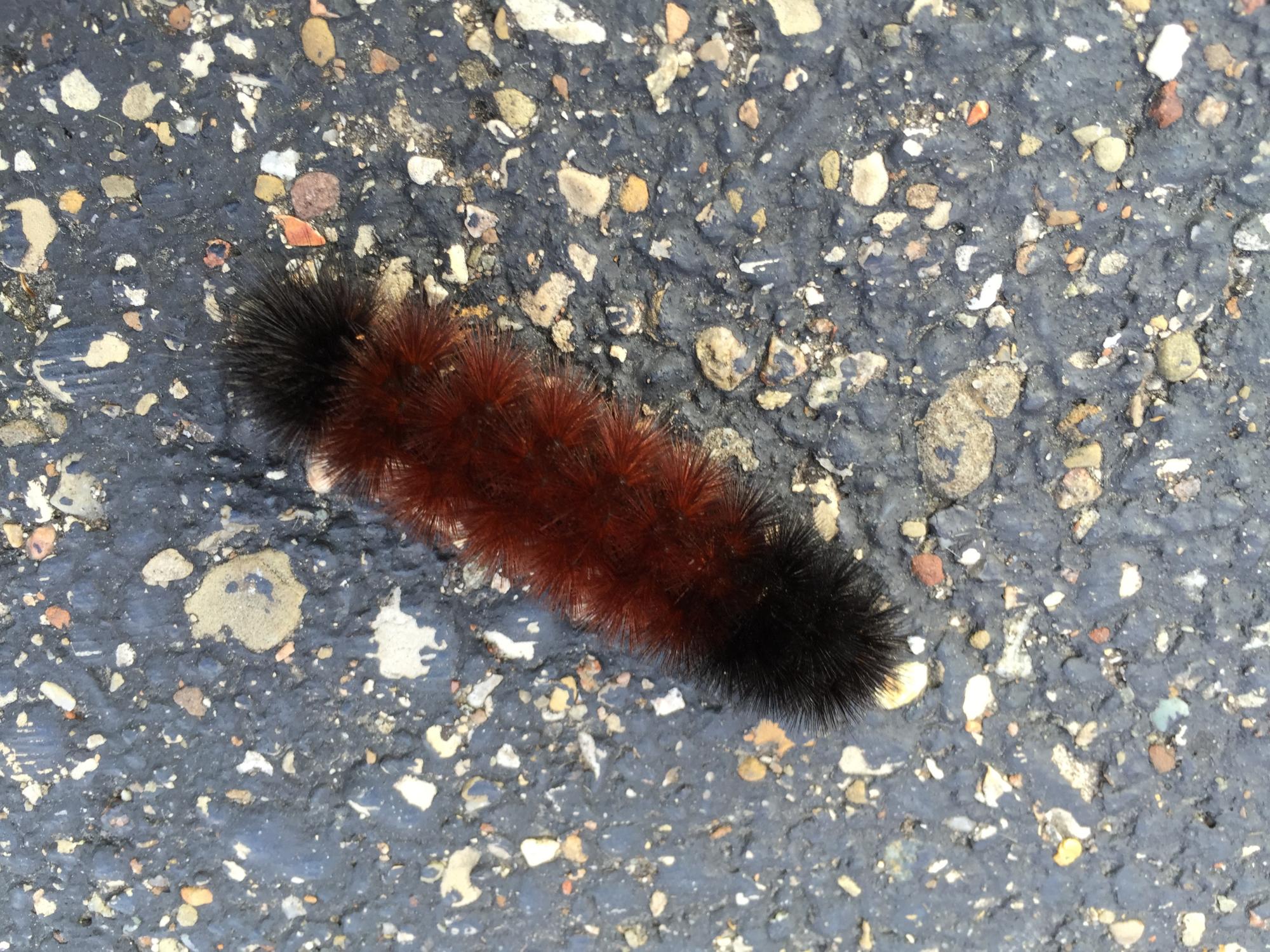WOOLLY BEAR AND OTHER TIGER MOTH CATERPILLARS
Virginian Tiger Moth caterpillar, also known as the Yellow Bear. The name "Yellow Bear" is misleading, because these caterpillars come in a dizzying array of colors, including white, beige, red-brown, yellow, black, and orange.
Woolly Bear caterpillar. This is perhaps our most recognizable caterpillar. Woolly Bears can be observed in great numbers, especially in autumn. Yet despite the abundance of the caterpillars, adult Isabella Tiger Moths are not overly common. Either the adults are much more secretive than their caterpillars, or they have a very high mortality rate.
Woolly Bear caterpillar, with a slightly different color pattern from the individual above. Woolly Bears typically have black on both ends, but other color variations exist.
This is another Virginian Tiger Moth caterpillar. Its "fur" is pristine white, but this caterpillar shares one key characteristic with the orange individual above: they both have a few extra-long, silky hairs (setae) that are much longer than the rest of their furry coat.


Giant Leopard Moth. These caterpillars are covered with black "fur", and they have thin red body segments, which are visible when the caterpillar twists and moves. Giant Leopard Moths overwinter in the caterpillar stage. You might see these fuzzy black caterpillars wandering around on warm winter days (or accidentally disturb them in your yard, if you do any winter gardening).
Salt Marsh Moth caterpillar, feeding on white sweet clover at Cox Arboretum. This gorgeous caterpillar is another member of the tiger moth family.
Agreeable Tiger Moth. These caterpillars are similar to Giant Leopard cats, but the rings are white instead of red. This species is not quite as common as the others shown above.